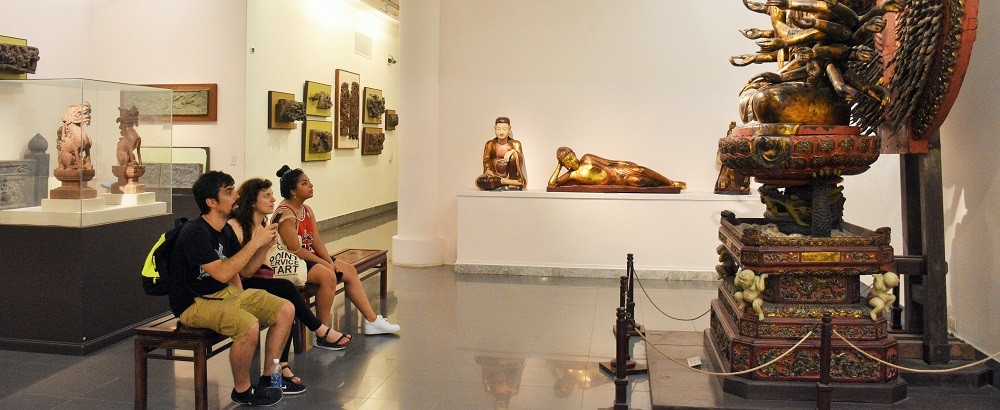
Technology is playing an increasing role in museum artifact management
Latest
 |
| Foreign tourists were amazed by artifacts displayed in the Vietnam National Fine Arts Museum. (Source: Vietnam National Fine Arts Museum) |
Numerous challenges in preservation and conservation of artifacts within the museum system demand scientific and practical solutions. It can be said that digital technology has contributed to changing its approach to cultural heritage conservation and promotion of cultural values.
Mr. Nguyen Anh Minh, Director of the Vietnam National Fine Arts Museum, said preventive conservation to prolong the lifespan of artifacts and effective artifact management are critically important tasks for every museum. Artifact management, digitization, and documentation are fundamental activities that ensure a museum operates efficiently.
According to Mr. Truong Nguyen Nguyen Kha, the head of the Professional Affairs at the Danang Fine Arts Museum, for effective inventory work, especially in the era of digital technology, museums need to invest in specialized equipment to assist in sorting and storing artifacts in warehouses and exhibition areas.
Simultaneously, the digitization of artifacts and the development of user-friendly software tailored to the needs of fine art museums are essential. This facilitates the data entry, review, search, and management of museum artifacts in a more scientific manner.
Similarly, Mrs. Dinh Thi Hoai Trai, Director of Hue Fine Arts Museum, also noted that museums should priorities the application of modern technology in conservation, including the development of centralized data management strategies for inventory, preservation, research and exhibition activities. Digitally controlled thermal and humidity sensors and night observation devices are useful for controlling display environments and security to prevent artifact theft.
















